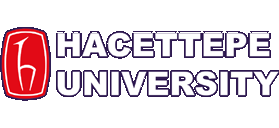ACADEMICS
Course Details
ELE671 - Spectral Estimation
2025-2026 Fall term information
The course is not open this term
ELE671 - Spectral Estimation
| Program | Theoretıcal hours | Practical hours | Local credit | ECTS credit |
| MS | 3 | 0 | 3 | 8 |
| Obligation | : | Elective |
| Prerequisite courses | : | - |
| Concurrent courses | : | - |
| Delivery modes | : | Face-to-Face |
| Learning and teaching strategies | : | Lecture, Question and Answer, Problem Solving |
| Course objective | : | Successful students are expected to gain : Knowledge of basic spectral estimation methods used for analysis of stochastic processes and signals. |
| Learning outcomes | : | A student completing the course successfully will Recognizes spcetral estimation problems, Models the encountered problems in suitable forms, Knows which algorithms can be used to solve the problem established, knows advantages and disadvantages of these algorithms, Applies the techniques and algorithms learnt in the class in projects, Has the adequate knowledge to follow and understand advanced up-to-date algorithms |
| Course content | : | Review of probability and stochastic processes. Periodogram and Blackman-Tukey spectral estimation. Autoregressive (AR), moving average (MA) and autoregressive-moving average (ARMA) spectral estimation. Minimum-variance spectral estimation. Sinusoidal Parameter Est. Bispectrum and polyspectrum. Spectral estimation of Nonstationary signals. Array processing. |
| References | : | 1-P. Stoica and R. Moses, Spectral Analysis of Signals, Pearson.; 2-S. Kay, Modern Spectral Estimation, Prectice-Hall.; 3-L. Marple, Digital Spectral Analysis, Prentice-Hall.; 4-Lecture Notes. |
| Weeks | Topics |
|---|---|
| 1 | Review Of Probability |
| 2 | Power Spectral Density. |
| 3 | Periodogram, Avg. Periodogram, Blackman-Tukey, Welch Methods. |
| 4 | Parametric Modelling, Linear Prediction. |
| 5 | Levinson Algorithm, Maximum Entropy. |
| 6 | Sinusoid in White Noise. |
| 7 | Autocorrelation, Covariance, Modified Cov. Methods, Burg Algoritm. |
| 8 | Durbin?s Method(MA) , ARMA spectral Estimation. |
| 9 | Term Exam |
| 10 | Model Order Est., Minimum Variance Sp. Est., Filterbank. |
| 11 | Sinusoidal Parameter Est., Pisarenko, MUSIC, ESPRIT. |
| 12 | Higher Order Spcetrum (Bispectrum) |
| 13 | Nonstationary Spectral Estimation (Wigner, Wavelet Tr., Evolutionary Sp.) |
| 14 | Array Processing. |
| 15 | Final exam |
| 16 | Final exam |
| Course activities | Number | Percentage |
|---|---|---|
| Attendance | 0 | 0 |
| Laboratory | 0 | 0 |
| Application | 0 | 0 |
| Field activities | 0 | 0 |
| Specific practical training | 0 | 0 |
| Assignments | 8 | 12 |
| Presentation | 0 | 0 |
| Project | 1 | 8 |
| Seminar | 0 | 0 |
| Quiz | 0 | 0 |
| Midterms | 1 | 30 |
| Final exam | 1 | 50 |
| Total | 100 | |
| Percentage of semester activities contributing grade success | 50 | |
| Percentage of final exam contributing grade success | 50 | |
| Total | 100 | |
| Course activities | Number | Duration (hours) | Total workload |
|---|---|---|---|
| Course Duration | 14 | 3 | 42 |
| Laboratory | 0 | 0 | 0 |
| Application | 0 | 0 | 0 |
| Specific practical training | 0 | 0 | 0 |
| Field activities | 0 | 0 | 0 |
| Study Hours Out of Class (Preliminary work, reinforcement, etc.) | 14 | 6 | 84 |
| Presentation / Seminar Preparation | 0 | 0 | 0 |
| Project | 1 | 15 | 15 |
| Homework assignment | 8 | 5 | 40 |
| Quiz | 0 | 0 | 0 |
| Midterms (Study duration) | 1 | 25 | 25 |
| Final Exam (Study duration) | 1 | 30 | 30 |
| Total workload | 39 | 84 | 236 |
| Key learning outcomes | Contribution level | |||||
|---|---|---|---|---|---|---|
| 1 | 2 | 3 | 4 | 5 | ||
| 1. | Has general and detailed knowledge in certain areas of Electrical and Electronics Engineering in addition to the required fundamental knowledge. | |||||
| 2. | Solves complex engineering problems which require high level of analysis and synthesis skills using theoretical and experimental knowledge in mathematics, sciences and Electrical and Electronics Engineering. | |||||
| 3. | Follows and interprets scientific literature and uses them efficiently for the solution of engineering problems. | |||||
| 4. | Designs and runs research projects, analyzes and interprets the results. | |||||
| 5. | Designs, plans, and manages high level research projects; leads multidiciplinary projects. | |||||
| 6. | Produces novel solutions for problems. | |||||
| 7. | Can analyze and interpret complex or missing data and use this skill in multidiciplinary projects. | |||||
| 8. | Follows technological developments, improves him/herself , easily adapts to new conditions. | |||||
| 9. | Is aware of ethical, social and environmental impacts of his/her work. | |||||
| 10. | Can present his/her ideas and works in written and oral form effectively; uses English effectively. | |||||
1: Lowest, 2: Low, 3: Average, 4: High, 5: Highest
